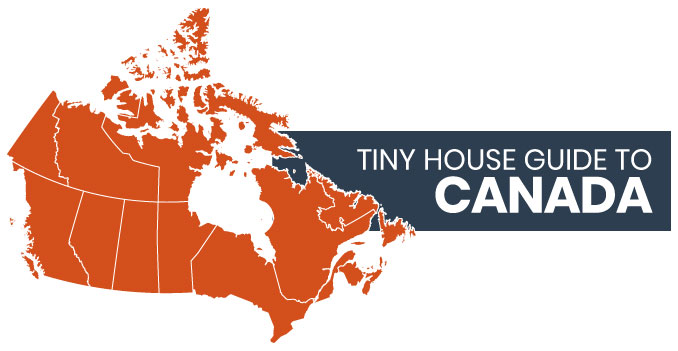
QUICK FACTS:
Are Tiny Houses Legal In Canada: YES*
Tiny House Costs In Canada: $80,000 – $200,000 CAD
Tiny House Friendly Cities: Toronto, Vancouver, Montreal, Quebec City
Tiny houses in Canada are legal, and the Canadian tiny house community is growing! We’ve compiled a list of builders, trailer dealers, groups to join, and building laws centered around Canadian tiny homes so you can start your tiny living journey in the Great White North.
Mint Tiny House Builders Vancouver, BC
Based outside of Vancouver, Mint Tiny House Company is a small building company for tiny houses on wheels. The team is dedicated to giving people in Canada and the U.S. the chance to own their own tiny house RV. They currently have four main prefabricated models available for purchase, each of which has been inspired by nature in some way and can be customized to their buyers’ desires.
Minimaliste Houses Quebec City, Quebec
Owned by Jean-Philippe Marquis and Elyse Tremblay, Minimaliste is a tiny house company that creates various models for the North American housing market. Their mission is primarily oriented toward simplistic designs. They aim to maximize the space in each of their 14 tiny houses on wheels currently available.
Depending on which North American location you ship to, Minimaliste offers different systems to meet the needs of your respective climate. You have the option to integrate a solar-powered electric system, propane system, integrated drinking water or gray water tank, or other solutions for “off-grid” life.
They also offer designs specifically equipped to handle the harsh winters in Quebec City. For example, their prototype tiny house is insulated with R21 for the walls and R39 for the ceiling and floor to combat the brutal cold.
Summit Tiny Homes Vernon, BC
With six prefabricated models and an entirely custom design route, Summit Tiny Homes gives its customers different options for executing their vision. The company is made up of a mere 12 employees, including craftsmen and craftswomen, carpenters, mechanical technicians, coordinators, and designers who each have a hand in every step of the process. When partnering with Summit, you can purchase one of their designs to be delivered, or work with the team to design your dream tiny house from scratch.
Teacup Tiny Homes Lethbridge, Alberta
Jennifer McCarthy, the owner of Teacup Tiny Homes, began her company with a specific vision of diversifying housing needs across Canada and the U.S. Jen believes that everyone should have the opportunity to experience life to the fullest, regardless of where they live. It was this drive that led her to create Teacup Tiny Homes. Jen has had the opportunity to draft and design many single and multi-family homes and show homes, and has fully designed nine dream lottery homes for Lethbridge over the years.
Teacup Tiny Homes builds all its tiny homes in Lethbridge, Alberta, in a controlled indoor environment. From there, trade partners are contracted to complete the homes through a specific checklist. Once complete, the homes can then be delivered anywhere in Canada or the U.S. Teacup has 12 prefabricated models available to buy, or you can work with them to design your own custom build.
Sunshine Tiny Homes Gibsons, BC
Sunshine Tiny Homes works with local vendors and service providers to build eco-friendly tiny house models. The company values sustainability, maximizing outdoor spaces, and living off grid. With a sales and design office as well as a build warehouse located in Gibsons on the Sunshine Coast, this company is aimed at those looking to downsize and explore the west coast Canadian lifestyle.
Sunshine Tiny Homes currently has two designs available. The Coastal Escape is the interior inspired by lofty forest and coastal landscapes, while the Simply Heaven design is built for the functional every day moments with space to relax.
Action Trailers Strathroy, Ontario
Action Trailers is a trailer manufacturer based in Ontario. Not only does it sell hauling products, it also performs services to both trailers and tow vehicles. The business does everything from general maintenance on your trailers to installing hitches and brake controllers on your tow vehicle. As far as products go, you can purchase merchandise from the selection of utility, snowmobile, equipment, landscape, car, enclosed, and even two models created specifically for hauling tiny houses.
Canada Trailers Aylmer, Ontario
Established in 1997 under a parent fabricating company, Canada Trailers has become a popular manufacturer in Ontario. Canada Trailers services individuals and businesses across the country. You can access its hauling products by connecting with your local dealership. The company can also assist you with questions regarding warranty and future parts requirements.
Canada Trailers sells six categories of trailers: utility, equipment, tilt, dump, bumper pull, and gooseneck. Bumper Pull trailers are the most popular trailer design for tiny houses, as they allow for a tiny house to have a more traditional house shape. Gooseneck is also a common trailer design when it comes to tiny living.
Precision Trailers Manitoba Province
Serving customers in western Canada and the northern United States, Precision Trailers is a rural Manitoba-based company specializing in flat deck trailers and car haulers. It offers a comprehensive line of hauling products including deck above, lowboys and tilting deck models. The company also offers bumper pull and gooseneck models ideal for transporting tiny homes. You can purchase prefab designs as well as custom build options. Precision Trailers sells products to satisfy industrial, construction, agricultural, or recreational needs.
Miska Trailer Factory Hamilton, Ontario
Miska Trailer Factory is a utility trailer manufacturer based in Hamilton, Ontario, in operation since 1994. The company does not use any dealers, meaning the consumer can buy Miska trailers directly from the factory at factory-direct pricing. The factory offers utility trailers, landscapers, carhaulers, low bed floats, deckover floats, equipment floats, and dump trailers.
Additionally, Miska is a participant in the green initiatives, utilizing technologies and practices to help with costs and to reduce the impact of manufacturing on the environment. You can purchase hauling products from Miska directly from the factory and have them delivered anywhere within Canadian borders.
Canada Tiny Houses For Sale
Talking about tiny houses in Canada covers a vast amount of land. So, of course, there are going to be some areas where tiny living is ideal and some where it is inaccessible. Canada is sectioned off into 10 providences and three territories, each with their own laws (we’ll cover this down below), climates, social environments, and cultural trends. When considering adopting the tiny life in Canada, it’s important to think about where exactly you’re planning to park your tiny house on wheels, or if you’re hoping to travel throughout the country.
A huge element to consider when moving into a Canadian tiny home is the climate and geographic elements. The five main geographic regions in Canada are the mountainous west coast, flat central prairies, eastern forested plains, frozen north, and the Atlantic region. However, over 90% of Canadians live within 150 miles of the U.S. border, due to the uninhabitable frozen tundra up north. But even the more southern regions of the country are subject to harsh, long winters. This is something to consider when going tiny, especially if you’re looking at living off the grid.
The entire country isn’t only subject to brazen winters though, contrary to the stereotype. The more populated portion of the country spans a wide latitude and has a more varied climate. From Quebec City to Vancouver, you’ll experience heavy rain, snowfall, or sunny 80-degree days, depending on the time of year. It’s important to do your own research before setting up your dream tiny home.
The beautiful country is also home to an abundance of forests, rivers, mountains, and lakes that attract eco tourists and align with the intentional living mantra of many tiny home owners. There are an array of natural parks and sights throughout multiple Canadian provinces where you can park your THOWs. Check out this list of RV-friendly camp grounds.
If you’re looking to purchase a tiny house in Canada to make into a forever home, browse these local tiny houses for sale throughout the country.
Canada is a beautiful country to call home, but it is also a popular vacation destination for families all over the world, especially in the fall and winter months. Consider renting a tiny house in Canada through Airbnb to try out living in a tiny house without making the commitment to building one yourself. Check out these houses for rent in the Great White North.
Canadian tiny house communities facilitate an intimate social connection between members and encourage thoughtful practices like sustainability, minimalism, stewarding resources, mindfulness, and interpersonal growth. Check out some of these Canadian tiny house communities.
Bluegrass Meadows Micro Village
Bluegrass Meadows Microvillage is a progressive community of people living in tiny homes and cabins, located 15 minutes north of Terrace, British Columbia. This authentic Canadian tiny house community lives, plays, and cultivates connection with one another within the ancestral territory of the Tsimshian Nation. Bluegrass Meadows sits 144 kilometers east of Prince Rupert and 63 kilometers north if Kitimat.
Members of the Bluegrass community have access to a common building with laundry, a recycling and waste program, community garden, fire pits, barbecue nights, endless hiking trails, fishing holes, and several beautiful lakes. The premises currently have 33 rented tiny homes and will soon have 45. They have six tiny home sites with four more under construction. You can rent a tiny house on the property for anywhere between $1,050 and $1,400 per month. Contact the leaders of the micro village through the website.
The Junction Village
The Junction Village is a multi-generational community that recognizes the profound benefits of connecting people across a neighborhood. Whether sharing childcare, a trampoline, or a lawnmower, its members strive to acknowledge that life is better when lived together. The community is located in the Junction Neighborhood just west of downtown Guelph, 94 kilometers east of Toronto.
Michael and Mary Kate, who own the properties and created Junction Village, are parents of three children. Michael is a former outdoor educator, and now a property manager. Mary Kate is an environmental consultant and is currently working on obtaining her PhD in carbon sequestration and indigenous communities at the University of Guelph.
Housing options in the Junction Village include tiny houses, single-family homes, multi-family homes, apartment rooms, yurts, and alcoves or pods.
The aim of the village is to have a wide diversity of spaces to host interesting, creative, inspired people to share their lives with. The weekly potluck in the summer months on Wednesday nights paired with a community shared agriculture drop off creates an open space for community and connection amongst the members.
Right now, membership is loosely defined, as Junction is not on a co-ownership model. Living spaces are privately owned, but they are in the process of creating a membership co-op with parameters around use and rental of the core facilities. You can contact Michael and Mary Kate through their website to learn more.
Tiny Homes Canada Community
If you’re interested in being part of a startup Canadian tiny house community in the British Columbia province, look no further than Tiny Homes Canada. The micro living community is currently underway, with the project being led by Kayla Feenstra. Kayla began her journey to tiny house living in 2013, building her current 130-square-foot home. Concurrently, she launched Tiny Homes Canada in answer to the need to live in a way that is both sustainable for our planet while still creating a comfortable space to call home.
Now, several years later, Kayla is following her dream of establishing a tiny house village in her area. Tiny Homes Canada is currently working with local municipalities across the Lower Mainland to seek solutions to land access and availability for tiny houses. Their goal is to support and facilitate the cultivation of many intentional tiny house communities in Abbotsford.
Abbotsford sits 72 kilometers outside of Vancouver and 160 kilometers outside of Victoria.
If none of these groups seem to interest you, we encourage you to look for your own groups and comment your findings at the bottom of our page. Or better yet, start your own group and tell us about it!
Vancouver Tiny House Meetup
Vancouver Tiny House Meetup is a group of about 1,000 members who consist of owners, want-to-be owners, builders, suppliers, hosts/land-owners, building code regulators, city officials, and others who have a passion for tiny houses. The group exists to alert tiny house aficionados of in-person workshops, classes, festivals, and getaway weekends that are happening in and around Vancouver.
Check out their meetup page to see a comprehensive list of events being held in this one-stop-shop location. Feel free to become a member of the group to share any upcoming tiny house event that is not yet posted in the Vancouver area.
Ottawa Tiny House Meetup
This Ottawa Meetup group is made up of around 1,000 members who want to downsize/declutter their living spaces and are interested in sustainability. They support lots of living styles like tiny homes, cabins, micro-lofts, small homes, carriage homes, and more.
The group has an in-person meeting about once a month in Ottawa, about 200 kilometers west of Montreal. In these meetings, sustainable living enthusiasts share information and their own experiences with the group. They welcome anyone who is interested in tiny homes and other forms of minimal living.
Tiny House Movement
This group in Nova Scotia is for anyone interested in designing, building, or living in a tiny home, specifically in the Nova Scotia province. Anyone out there with any experience, knowledge, or general interest in tiny houses is welcome to become a member of the group. It ranges in experience levels from those just learning about life in a tiny home to tiny house experts.
The group also hosts and communicates with one another about several events like camping trips and meetings. Check out their page to learn more about the movement for tiny houses in Canada.
Can I Legally Bring My Tiny House To Canada?
Can I Import A Tiny House Trailer Into Canada From The United States?
Whatever your reasoning may be for wanting to bring your trailer into to Canada from the U.S., just know that this process is easy if you go through the right steps. Don’t worry about your trailer not making it through the border.
As long as your paperwork is in order and you pay the taxes, you can quickly and legally transport your trailer across the border. Here is a list of the forms you’ll need. They must be the original forms, not copies:
- Title Papers or Manufacturers Origin Letter (for brand new custom trailers)
- Clearance Recall Letter
- Original Bill of Sale
- Your Passport and Government-Issued ID
- VIN Numbers
Border security should give you Form 1 in return for your paperwork. After you cross the border, there are two more simple steps to make your trailer fully legal. First, take the Form 1 you received from the border and go to the Registrar of Imported Vehicles.
Here, you’ll receive Form 2. After you get Form 2, bring it to an inspection facility to have your trailer inspected for use on Canadian roads. Simple as that! You can now start building your tiny house on wheels on top of your imported trailer.
Can I Cross The Canadian Border With My Tiny House On Wheels?
What if you’re traveling and need to bring your entire tiny house across the border? There are many gorgeous parts of Canada that would be perfect for exploring from the comfort of your own tiny house on wheels. This is allowed and is a pretty simple process. In fact, many tiny housers say the process of crossing into Canada for travel was easier than crossing back into the states.
The entire border crossing process will likely take 25 to 30 minutes depending on how long it takes border security to search your house and truck. And yes, they will search both. Make sure you have all of your legal documents to crossover both for yourself and your car — especially your passport.
I would also suggest moving most of your food from your house into your truck before inspection, in case security tries to confiscate it from your dwelling. Overall, your cross over into the Great White North with your tiny house on wheels should be smooth.
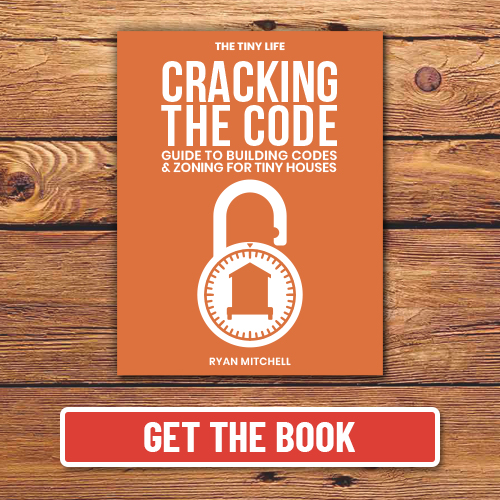 In general, there haven’t been as many tiny house-specific building codes written for Canadian tiny homes when compared to what we’ve seen from the United States. In addition, the disparity between buildings codes from province to province can be grey and blurry (read more about this below).
In general, there haven’t been as many tiny house-specific building codes written for Canadian tiny homes when compared to what we’ve seen from the United States. In addition, the disparity between buildings codes from province to province can be grey and blurry (read more about this below).
And yet, there is a thriving, interconnected web of tiny homeowners, tiny living enthusiasts, and high-quality tiny house builders spread all throughout the country. So how did they do it? By knowing the building codes in their area, finding loopholes, and making sure their vehicle or house was up to code all the way down to the last detail.
The National Building Code of Canada sets out technical provisions for the design and construction of new buildings countrywide. However, the 10 different provinces in the country each come with their own set of bylaws that can freely amend this nationwide code.
From what I can gather, Canadian tiny house laws and regulations leave much to be desired for homeowners looking to own smaller dwellings. Basic zoning rules seem to prohibit tiny houses in many major cities and towns, which has provided incentives for tiny home enthusiasts to spark change. However, this doesn’t make it easy to start living tiny right now.
There were a fair number of protests and social movements happening in 2019 to get Canadian lawmakers to recognize tiny houses as a viable living option. Some were successful, but there are certainly changes still to be made. Overall, regulations are tight, but going tiny isn’t impossible! Keep reading for the scoop on the best locations and building specifics to legally live tiny in Canada.
Tiny House Laws in Canadian Provinces: Local Zoning Ordinances
Each Canadian province has an independent set of zoning bylaws that impact the legality of tiny homes in the area. These bylaws implement municipal and regional district land use and building regulations. A zoning bylaw can limit the height, square footage, and acceptable features of distinct structures, affecting tiny houses directly.
Tiny House Laws in British Columbia, CA
The province of British Columbia doesn’t specify regulations on tiny dwellings in its zoning bylaws, laid out in the Local Government Act, Part 14, Division 5. This lack of recognition means that tiny houses must meet housing codes designed for traditional homes.
This sounds like a pretty loose law on paper, but in reality, tiny houses tend to have attributes that make them non-compliant with general regulations. For example, narrower doorways and hallway widths, smaller framing stud sizes, the existence of lofts, and a lack of secondary exits may be harder to include in your design under the regulations for traditional homes.
On a more positive note, while the British Columbia Building Code may not recognize tiny houses, it does not explicitly prohibit them either. So, a house can be as small as possible provided it meets the objectives for safety, health, accessibility, fire protection, energy management, and water efficiency of traditional structures.
Social organizations like the British Columbia Tiny House Collective and several others are working toward the recognition of tiny homes across the province. The BC Collective is fighting for the legitimization of independent bylaws for tiny houses, defining a tiny home as a place of temporary or permanent residence under 500 square feet with the amenities of a permanent home. Hopefully, this specific definition will be recognized by lawmakers and building codes in the coming years.
Sadly, this initiative is not yet approved. Homeowners should refer to the traditional building codes when it comes to tiny living in British Columbia for the time being.
Learn More About Tiny House LIving, Tiny Homes and Alternative Housing In British Columbia
Tiny House Laws in Quebec, CA
Quebec supports the legal use of tiny houses on wheels as a motorized vehicle, which includes several subtypes. This gives more freedom to the owners of tiny houses on wheels as far as what features are and aren’t allowed for their recreational vehicles. Quebec is ahead of the game on this in comparison to other provinces.
In order for your tiny house on wheels to be permitted as a recreational vehicle or a motor home, the way you build it should abide by the motorized vehicle modification codes (Read the PDF here) outlined by the Quebec Society of Insured Automobiles. The society recognizes two classes of recreational vehicles, with three sub classes of motor homes, which are:
- Class A (motorhome built on a heavy or commercial truck or a bus)
- Class B (called a “camper van,” with a raised roof added onto a conventional van)
- Class C (built on a sturdy truck chassis with a cabin that doubles as living quarters)
Each of these classes comes with its own rules as far as which features, safety standards, and dimensions are allowed. In order to legally live in your tiny house on wheels in Quebec, you will need to ensure that its characteristics align with the codes for the letter class it fits into. The standards to follow will depend on how your tiny home is built, determining its class.
Check out the CSA Z240 RV series standard, the RVIA NFPA 1192 standard for RVs, or the CSA Z241 park model trailers series standard or go ahead and purchase the full text to leaf through which regulations may apply to your vehicle. You will also need to officially register your vehicle, make sure the inspection sticker is affixed to the side of your RV near the door, and legally certify your vehicle.
When it comes to tiny houses on foundation in Quebec, the province has some tighter regulations. The April 2021 version of the Quebec province construction code (Read the PDF here) regulates the construction of mini-houses with several specific rules. Here are the restrictions worth noting:
- Quebec doesn’t make provisions for structures that are less than 700 square feet.
- It is prohibited for small dwellings to be used as a residential annex
- Any structure less than 320 square feet is prohibited for single family homes, especially if the structure has just one room.
These restrictions can feel like a setback for the tiny community; however, most municipalities are able to tweak the laws and regulations to accommodate tiny homes on their own. Though many are still reluctant to accept the movement, it is only a matter of time before tiny homes become fully legal in all of Canada, including Quebec.
Tiny House Laws in Ontario, CA
The Canadian Building Code is used as a guideline by all municipalities in Ontario as far as I’ve been able to deduce. However, each city can amend these guidelines to fit their own vision for rules and regulations with explicit approval. Let’s get down to what’s allowed in Ontario.
Like in most provinces and major cities throughout Canada with the exception of Quebec, tiny houses on wheels are hard to use as a permanent home due to their classification as recreational vehicles and the restrictions placed on them. In Ontario, it is illegal to park a recreational vehicle on undeveloped land. This means it is illegal to live full time in a recreational vehicle in the province unless you are at an RV resort or park where RVs are allowed.
It’s a difficult feat to build a tiny house on wheels and use it as your full-time home on private property. You can get a permit to live in an RV short term while you are building a traditional house, but this is the only time you can live in an RV, unless you are in a licensed RV park.
Houses on foundation are a different story. There’s a little more leeway for tiny homeowners who want to build a permeant tiny house. Some municipalities require a 1,000-, 500-, or 400-square-foot minimum when building.
However, Ontario’s building code allows for homes to be built that are 239 square feet, plus a bathroom, which is a pretty lenient regulation and a silver lining for the tiny house community. Tiny houses cannot legally be smaller than 188 square feet. To find out more about where you can legally live in a tiny house in Ontario, check out the specific zoning bylaws for the province.
Tiny House Laws in Alberta, CA
Alberta uses a 2019 revised edition of the National Canadian Building code to establish design and construction standards for houses and small buildings. The National Building Code, 2019 Alberta Edition, which you can read in full here, (Read the PDF here) is based on the National Building Code of Canada 2015 which is used for most major municipalities throughout the country.
Overall, the tiny house movement isn’t super beloved throughout the province of Alberta. Some residents fear that legalizing tiny homes will drive down other property values. This controversy has been a dose of harsh reality for those who dream of the lifestyle the tiny house movement has provided so many in other areas around the globe.
Right now, residents of Alberta should defer to the 2019 Canadian building codes as well as the latest updates (2019) for building codes in Alberta and the Alberta safety codes when it comes to determining if the specifics of your tiny house on foundation are legal in the area. As far as tiny houses on wheels go, recreational vehicles are not legal for long-term or permanent, year-round habitation in Alberta, restricting THOW owners from living in their vehicles full time.
Tiny House Regulations in Canadian Cities
Independent cities have the freedom to override the regulations on small dwellings laid out by their respective counties. Take a closer look at some of the major cities throughout Canada as we investigate what they do or do not allow.
Tiny House Building Codes in Vancouver, British Columbia
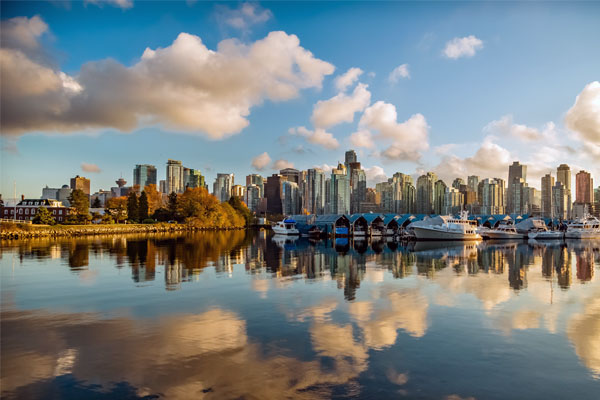 At this time, it’s pretty hard to permanently live in a tiny home on a foundation in Vancouver, due to the laws for traditional houses in BC that tiny homes must also follow. If you are looking to live in a THOW in the city, you can get your THOWs certified as a recreational vehicle under the RVIA NFPA 1192 and CSA Standard Z240 RV. Please keep in mind that it is your responsibility to be aware of any bylaws that may affect parking your tiny house in accordance with parking laws for recreational vehicles in Vancouver.
At this time, it’s pretty hard to permanently live in a tiny home on a foundation in Vancouver, due to the laws for traditional houses in BC that tiny homes must also follow. If you are looking to live in a THOW in the city, you can get your THOWs certified as a recreational vehicle under the RVIA NFPA 1192 and CSA Standard Z240 RV. Please keep in mind that it is your responsibility to be aware of any bylaws that may affect parking your tiny house in accordance with parking laws for recreational vehicles in Vancouver.
Legislation is in the works to make life easier for those who want to live tiny in the city. On Oct. 6, 2020, a council meeting was held to evaluate a motion to take a closer look at the legitimization of tiny homes and shelters in the city of Vancouver.
In accordance with the motion submitted by Councilor Fry, (Read the PDF here) tiny homes are allowed on private and public land in partnership with NGO, community, and religious groups as well as in market, co-op, and supportive housing models to aid the housing continuum and provide affordable options for the under-housed populations.
However, neither the Vancouver Building By-law 12511 (Read the PDF here) nor the Zoning and Development By-law 3575 (Read the PDF here) support the building and permitting of tiny homes or shelters as a private endeavor. This is something the council is currently working on. The council is hoping to enact these possible changes to both bylaws in the coming years to be more accommodating to tiny homeowners:
- Legitimization of mobile, fixed, and temporary modular tiny homes and shelters
- Minimum and maximum sizes for dwellings
- Options for shared facilities like showers, washrooms, and kitchens
- Allowing temporary and semi-permanent location of tiny homes and shelters in R-, C-, and I- zones
- Options for infill and secondary units
- Options for mobile units in parking lots
While these considerations are currently underway, residents of Vancouver should treat the structure the same as a traditional dwelling for the time being.
Tiny House Building Codes in Toronto, Ontario
Following the building codes for the province of Ontario, tiny homeowners in Toronto should refer to the 2015 National Canadian Building Code as a guideline for the construction of all dwellings throughout the city. This is the building used by most municipalities to regulate what is and isn’t allowed for structures throughout the country.
Toronto did undergo some unique changes in 2020 that directly impact the tiny living community. City councilors are set to take the next step towards legalizing a new kind of tiny housing with its own regulations, separate from traditional dwellings.
Say hello to the legitimization of garden suites as a form of permanent housing in Toronto. These dwellings are sometimes known as granny flats, coach houses, or ADUs. They serve as a space where people can legally live permanently and usually sit in homeowners’ backyards.
In the past, ADUs have not been allowed in Toronto, just like in many parts of Canada. The difference between ADUs/garden suites and laneway suites, which were legalized two years ago in Toronto, is that laneway suites must have separate rear access, which garden suites do not. Refer to the City of Toronto Zoning By-Law No. 569-2013 (Read the PDF here) for the full text and specificities of dimensional requirements for these dwellings.
Tiny House Building Codes in Calgary, Alberta
Calgary is the most popular city in the province of Alberta, and has created its own set of regulations for smaller dwellings. In accordance with the province, The Calgary Land Use Bylaw regulates tiny homes the same way it regulates traditional houses, and tiny houses on wheels the same way it regulates RVs.
A tiny home will be subject to the same rules as any other dwelling unit and must meet basic safety standards for either a traditional house or a recreational vehicle. However, there is one additional work around for tiny homeowners in Alberta laid out below.
For tiny houses on wheels in Calgary, most tiny homes are built on a chassis to comply with Canadian Standards Association requirements for recreational vehicles and are not certified for year-round living. The city regulates this type of vehicle as it would any other RV regarding where the vehicle can be parked or stored. This means in Calgary and most of Alberta, its harder to live in a recreational vehicle full time than it is to use it for travel.
Calgary does have one city-specific addendum that provides a way around this classification for tiny houses on wheels. A tiny house constructed on a permanent undercarriage or chassis (with or without wheels) can actually be classified as a manufactured home (commonly referred to as a mobile home), instead of as a recreational vehicle.
Manufactured homes must meet Canadian Standards Association certification requirements for mobile homes (Read the PDF here) laid out by the CSA on their main website. But these buildings must have a development permit in land use districts that specifically list this classification option, which are the Residential-Manufactured Home (R-MH) District or Special Purpose – Future Urban Development (S-FUD) District.
For tiny houses on foundation, citizens in Calgary should abide by building codes for traditional housing and follow those regulations. A tiny house built on the ground or a foundation must comply with the rules in the Land Use Bylaw regarding single detached dwellings, the Calgary code for new house construction, and the Alberta Building Code.
If the tiny house is intended to be an additional dwelling where there is already an existing single detached dwelling on site, then the tiny house is considered to be a backyard suite, and would need to meet these Land Use Bylaw rules and Alberta Safety Codes. Learn more about secondary suites and backyard suites.
In both cases, safety requirements including building and fire codes must be met. These permits and codes include a provision that to be permanently occupied, the structure must be built on a permanent foundation and be fully serviced with utilities such as water and sewer lines. Stamped drawings from a professional engineer or architect may be required prior to the building permit approval from the city.
Municipal Codes For Canadian Provinces
*Disclaimer: The information provided on this website should not be taken as an expert opinion, consultation, or advisement of any kind. Building codes, home building, zoning, local laws etc are complicated and ultimately your responsibility to execute legally and safely. You must do your own research, consult with and verify with all applicable authorities, local officials, regulatory bodies, code and zoning officials, and city/state/federal governments. See our full legal page for further information here: https://thetinylife.com/about-us/legal/


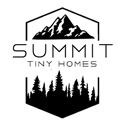

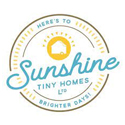





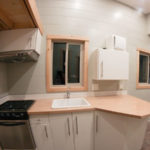
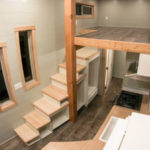
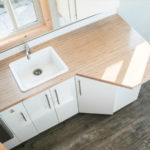
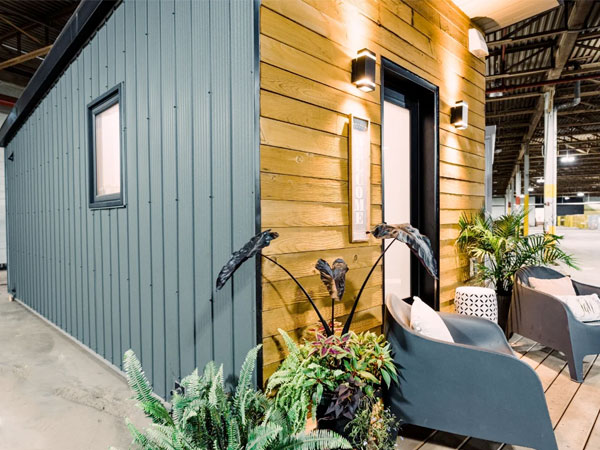
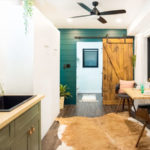

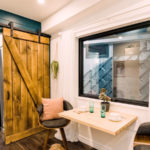
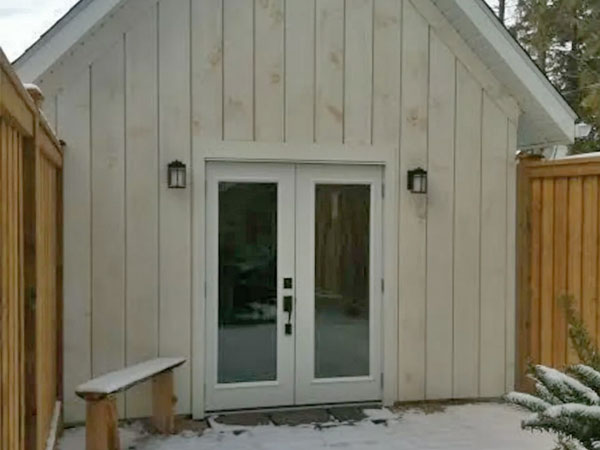

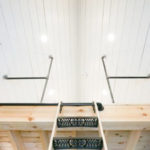
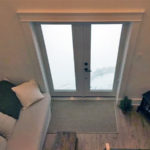
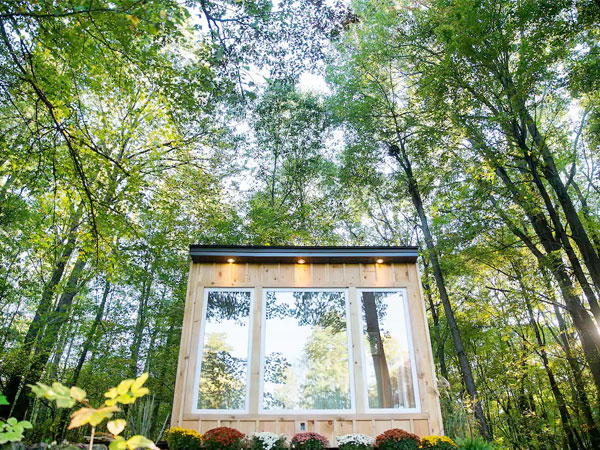
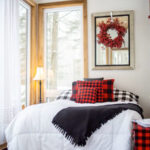
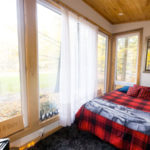
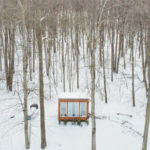
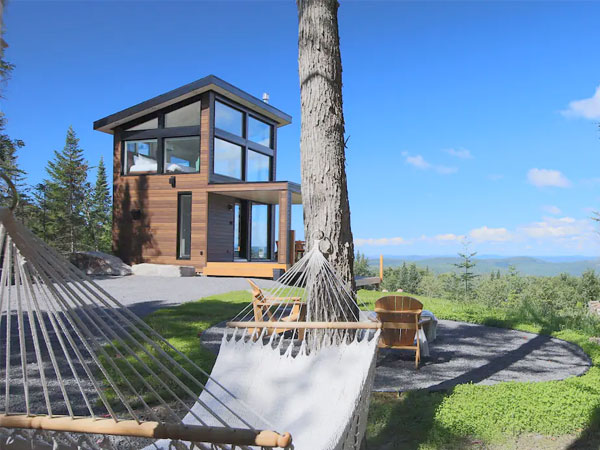
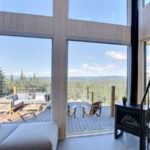
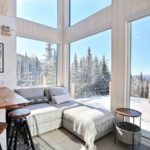
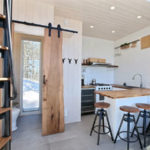
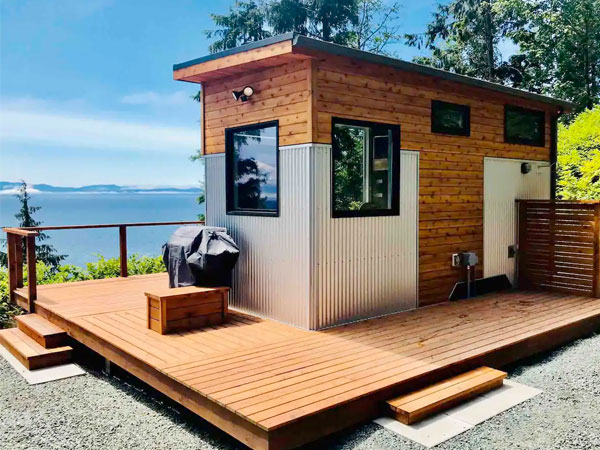
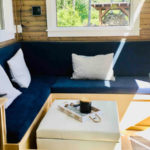
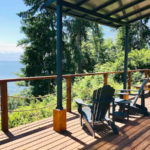
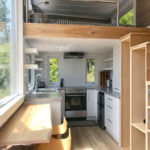

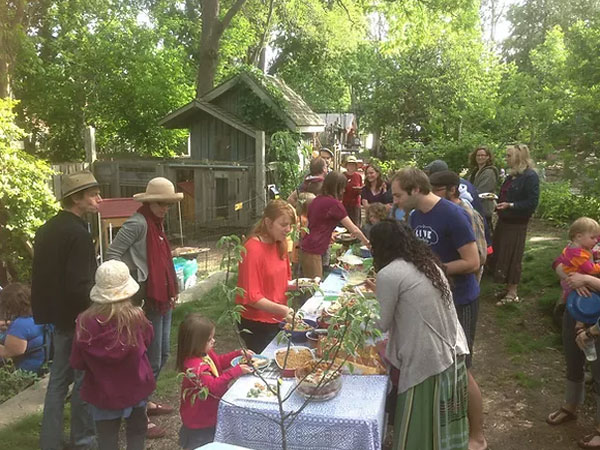
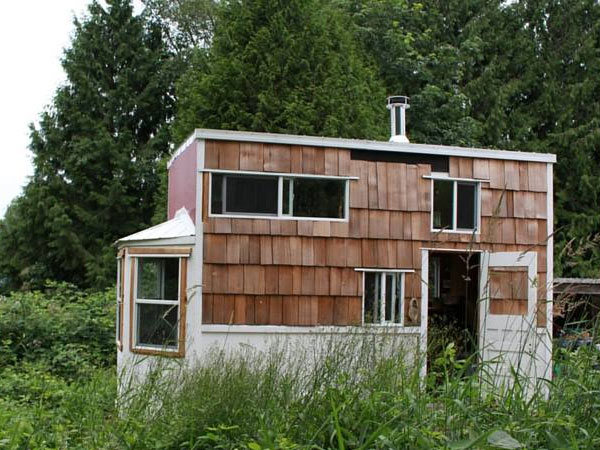
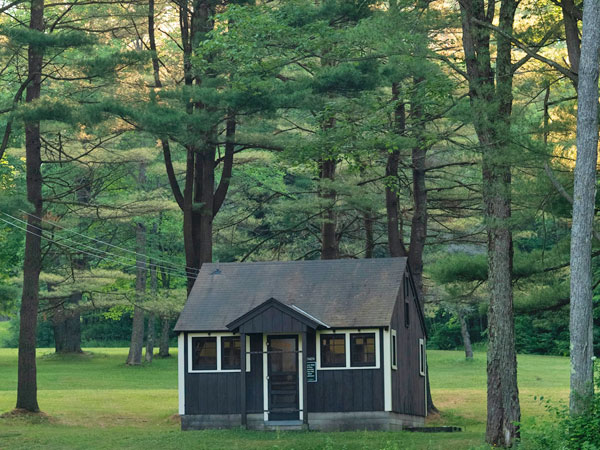
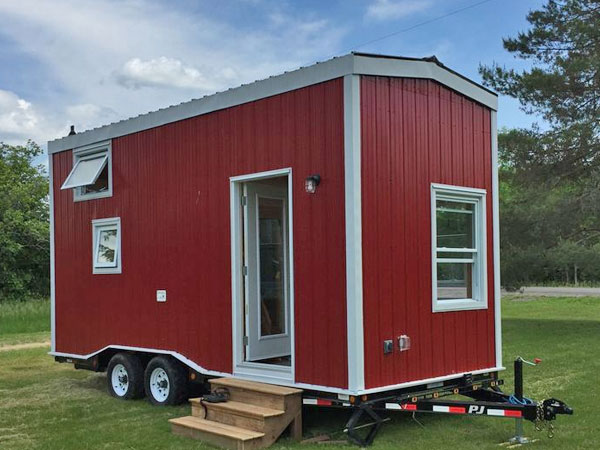
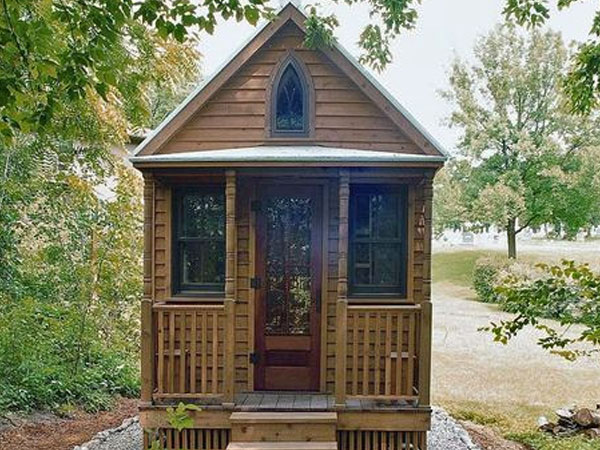
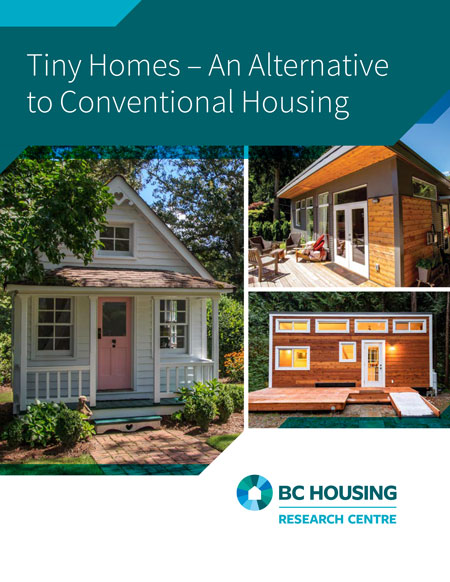
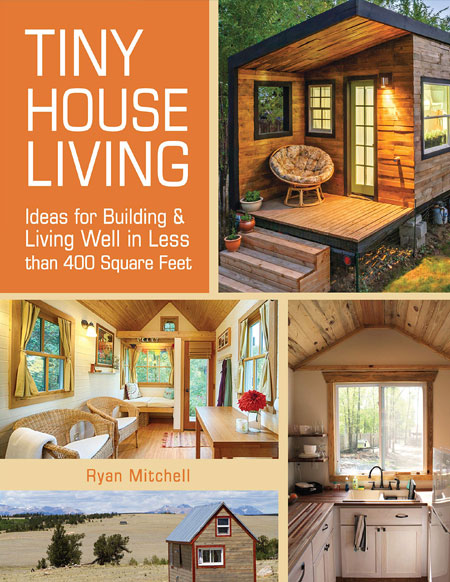
Have you heard of a national rule that states if the structure can be removed within 24 hrs, it is not subject to local zoning or building codes?
Thanks.
Wee Bitty Builders is a tiny house builder in Saint John, NB. Are there no guidelines or codes for New Brunswick?
This was very informative and helpful.
Love this guide! As a Canadian tiny house enthusiast, it’s so helpful to have a comprehensive resource for building and living tiny. Can’t wait to explore more of your blog and learn from your experiences. 🚌❤️